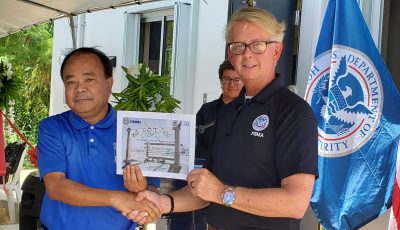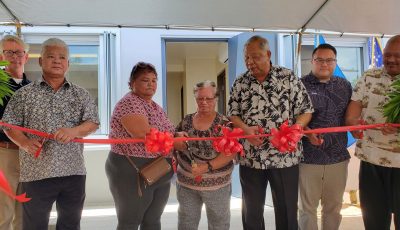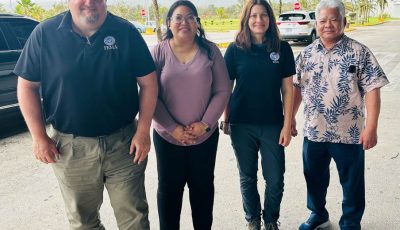Joint Information Center can’t get through FEMA line
Yesterday’s scheduled teleconference meeting between the Federal Emergency Management Agency and local government agencies that have been part of the Joint Information Center was short-lived after they can’t get through the FEMA line.
The meeting was set in order to come up with a joint catastrophic typhoon plan. The Governor’s Office needs a unified document from all agencies that became part of JIC last year that would be submitted to FEMA.
The meeting will be scheduled for another day, as it appeared that there were problems with the phone line or FEMA was offline. FEMA’s line could not be reached with a recorded voice message saying that the line for conference call is full.
Press secretary Ivan Blanco, to still make use of their time, said the meeting was to gather all input from the agencies that have become part of JIC last year for a joint catastrophic plan that would help prepare the CNMI in future disasters like typhoons, earthquakes, volcanic eruption, tsunami, and even civil unrest.
“We don’t want to reinvent the wheel. We just want to know what we could bring to the table and what FEMA will need from us,” said Blanco, who was last year’s coordinator of the JIC after Typhoon Soudelor.
“We sent out a document to some of the public information officers to get accurate information regarding what they do during disasters and the exact [Standard Operating Procedure] they follow. We want to make sure whatever sent out to the public is accurate.”
Blanco said that’s the main focus of the supposed meeting. They would also want to get everyone’s ideas and inputs on how to get and release accurate information. “We’re going to try to get FEMA in the teleconference again next week.
Department of Public Safety Commissioner Robert Guerrero said each government agency needs to know what to do and their responsibilities before, during, and after disasters. “I remember that in mid- to late ’90s we have a state emergency plan detailing the functions, evacuation plan, and even addressing the issues on how to deal with hazardous materials,” said Guerrero, who added that it was the first thing that he checked when he was appointed to head the DPS.
“We may also look into that. FEMA also has ideas that they want to work on. Let’s just see if there’s something new. Although, everyone must be aware of what they supposed to do before, during, and after a disaster,” Guerrero said.
Blanco wanted each agency or department to have a PIO or a designated person whose primary task is to release information to the public. He said last year was a good lesson to all since it was hard to get the needed information out after the typhoon.
“That’s why we even asked folks who we’ve heard that are going from village to village to be part of the JIC team. If there’s a next disaster, I don’t know if we can still gather the same people or they would still partner with us,” he added.
Releasing accurate information before and after a disaster is important. “Sometimes people hear news and it spreads like wildfire. It really helps if you have all accurate information to get out to general public,” said Blanco.



























